THE QUESTION OF THE MALVINAS ISLANDS - HISTORICAL BACKGROUND
The Malvinas Islands were discovered in 1520 by members of Magellan s expedition. Although they received several names in European cartography, they always remained within areas under the actual control of Spanish authorities.
The Papal Bulls and the Treaty of Tordesillas of 1494 were the first instruments to reflect Spain s titles in accordance with the international law prevailing at the time.
The whole southern region of the American continent, with its coasts, seas and islands, was indisputably preserved under Spanish sovereignty through several treaties signed in this period, such as the American Treaty of 1670, between Spain and England. The Peace of Utrecht, signed in 1713, ensured the integrity of Spain s possessions in South America and confirmed its exclusive right to sail the South Atlantic. England agreed to such terms as a signatory to the Utrecht agreements and subsequent treaties of the 18th century ratifying it.
In 1749, Spain learned of Britain s intention to settle in the Malvinas Islands and firmly protested against the United Kingdom, whose government eventually abandoned the plan. In 1764, France expressed its interest in the Malvinas Islands by creating a settlement it called "Port Louis" in Soledad Island. Spain strongly opposed this and earned France s recognition of Spain s rights to the islands, France ended its occupation in the archipelago and formally turned the islands over to the Spanish authorities. Shortly after France s settlement, the United Kingdom again expressed its intention to take over the Islands, this time through an expedition that reached the archipelago secretly and erected a small fort that they called "Port Egmont", on an island to the west of Gran Malvina.
Despite the secrecy of the operation, Spain became aware of it, protested insistently and, as it did not receive an acceptable answer in 1770, it expelled its occupants. The two countries were on the verge of war, until they eventually reached an agreement in 1771 embodied in two Declarations: a Declaration by which Spain gave Port Egmont back to the British, making an express reservation of its sovereignty over the whole of the Malvinas Islands archipelago, and an Acceptance of the Declaration in which Great Britain remained silent regarding the reservation of rights made by Spain. The agreement included that the English would withdraw from "Port Egmont" shortly, which indeed occurred in 1774. Since then, the Spanish authorities based in Puerto Soledad continued exercising jurisdiction and control over the whole of the archipelago.
In 1790, when the Treaty of San Lorenzo de El Escorial was signed, Great Britain undertook not to establish any settlement on neither the Eastern nor the Western shores of South America, nor on the adjoining islands occupied by Spain, which was the case of the Malvinas Islands. The succession of Spanish governors in the Malvinas Islands, thirty-two in total, was continuous until 1811.
As from the Revolution of May 1810, the Malvinas Islands were considered by the first Argentine governments an integral part of the territory inherited from Spain.
In 1820, despite the internal struggles faced by the emerging Argentine State, David Jewett, an Argentine Navy Colonel, took his oath of office in the Malvinas Islands on behalf of the United Provinces of the River Plate in a public ceremony held in Puerto Soledad, attended by sea lion and whale hunters of several nationalities, including the US and the UK. The news was echoed in US and UK media (The Times of London, David Jewett, 3 August 1821). Despite the publicity given to the ceremony held by Argentine authorities, neither on that occasion nor later in the process of recognition of the Argentine State, which led up to the signature of the Treaty of Friendship, Trade and Navigation of 1825, did Great Britain state any intention to stake a claim to the Malvinas Islands. The Argentine governments took several steps demonstrative of their sovereignty over the islands, granting land and passing laws related to fishing resources. In this context, Puerto Soledad thrived, with its inhabitants raising cattle, hunting sea lions and servicing the vessels that docked there. On 10 June 1829, the Argentine government created the Political and Military Commandancy and appointed Luis Vernet as head. Following over half a century of silence since the brief episode of Puerto Egmont, with successive uncontested Spanish and Argentine administrations in the Malvinas Islands, it was only in November 1829 that the UK, driven by a renewed strategic interest in the South Atlantic, presented a protest against the decision of 10 June that year. Shortly afterwards, on 3 January 1833, a corvette of the British Royal Navy forcefully expelled the Argentine authorities that refused to recognize any authority on its part. This event, which took place in times of peace, without any prior declaration or notice from a government that was thought to be a friend of the Argentine Republic, was immediately rejected and protested against by the Argentine authorities. Indeed, on 16 January 1833, when the first news of the events in the Malvinas Islands reached Buenos Aires, the Argentine government requested an explanation from the British Chargé d Affaires, who was not aware of the action taken by his country. A few days later, on 22 January, the Minister of Foreign Affairs of Argentina submitted a formal protest before him, which was renewed and expanded on several occasions by the Argentine representative in London. The repeated Argentine submissions before the British Government invariably met with negative answers from Britain.
The issue remained pending, as recognized by the UK Foreign Secretary in 1849 in an official communiqué. On Argentina s side, the issue continued to be raised at several levels of government and debated in Congress. In 1884, in the absence of an answer to the protests, Argentina proposed that the matter be referred to international arbitration, which was also refused by the UK without expressing any reasons for such refusal.
The successive Argentine governments continued to submit, albeit to no avail, protests to the UK and to make the relevant submissions and reservations, at every available opportunity, in order to defend and preserve its rights of sovereignty over the disputed archipelagos.

